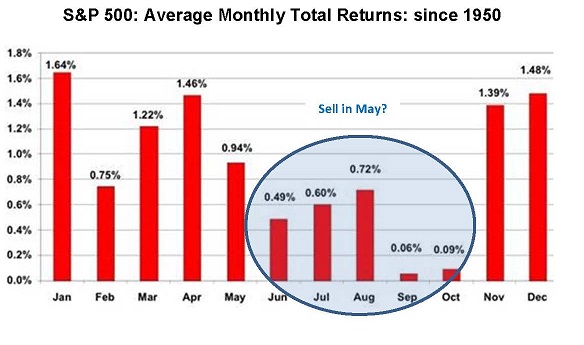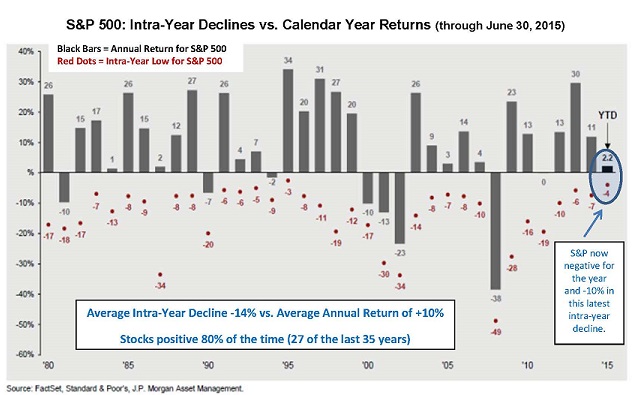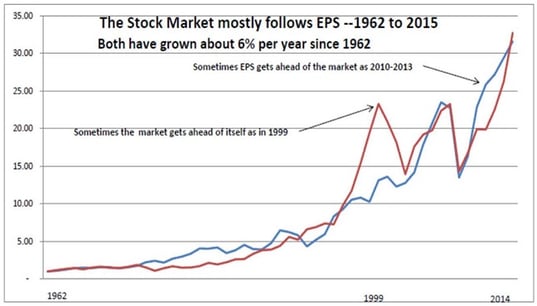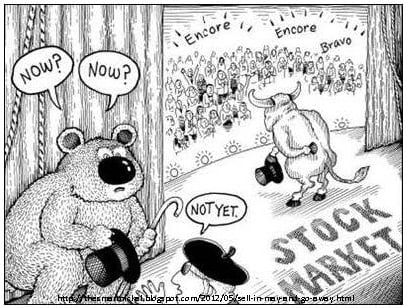These are the Times that Try Men's Souls
These immortal words of Thomas Paine were critically important to George Washington and the battle for American independence. What is happening to the stock market now is trivial by comparison. America had lost every battle versus the British and things seemed hopeless until the crossing of the Delaware. Now, the economy is quite strong and valuations of stocks are reasonable. If this is the case why is it that the current decline in the stock market of 10+% creates so much angst? Is it the mood, or the math? Is it noise or a signal of tougher times to come?
Let's look at history: There are two trends in volatility that confuse investors.
The first is that most of the growth of the stock market has occurred in the November through April periods of time each year. You might as well "Sell in May and go Away," right?

Low returns in the May through October period have also been accompanied by the probability that 80% of the declines of 10% or more have occurred in this period. This could be called the silly season.
But hurricanes occur about 100% of the time in the May through October period of time and one does not sell their house in Florida or Rehoboth as a result.
The second phenomenon is that, sooner or later each year, the S&P 500 declines from its intra-year highs. Despite average intra-year drops in the stock market of about 14%, the S&P 500 has turned around to have positive returns in 27 of the past 35 years.

It can’t be that easy, right? Here is what you’d miss if you sold in May:
We own well-managed companies for the right to participate in a growing stream of earnings and dividends with a goal to grow our savings and outpace inflation over the long run. If this is our long-term thesis for owning stocks (S&P 500) one also remembers that approximately 40% of the total return in owning these companies comes from dividends. Missing this income would have a dramatic impact on the long-term results for your portfolio. Combine this with paying taxes to get out (Sell in May) and get back in for the usually good months and you could quickly eliminate any possible gain from this kind of strategy.
In other words the current decline of about 10% during the “silly season” is just "noise" that is normal. It is certainly uncomfortable but we know that sometimes the market reflects the mood and not the math. Another way of saying this is that volatility in the stock market is not only normal but it is the oxygen that fuels what makes owning equities more attractive than owning bonds. Investors require a premium return to compensate for the risk of short term volatility.
The fundamentals tell us that stocks tend to follow their earnings per share (EPS) over longer periods. There are times where they lead EPS, as in 1999, and sometimes where they lag, as in 2011-2013. They both seem in sync now.

There are things to worry about including the slowdown in China, terrorism around the world, our dysfunctional government both locally and nationally, the changing demographics, the dichotomy between the rich and the poor, but the summer doldrums and normal seasonal declines are not one of them. We believe this correction will be bought and that equities will finish 2015 at a higher level than they are today. Volatility and dislocation in markets set up opportunities for investors who have discipline and patience.
Please keep in mind that we stress the importance of diversification and managing volatility and risk in our portfolios. As always, we are watching the activity of the capital markets closely and will be in touch as things evolve. We appreciate your trust and welcome any questions that you may have about your portfolio.
IMPORTANT DISCLOSURES




